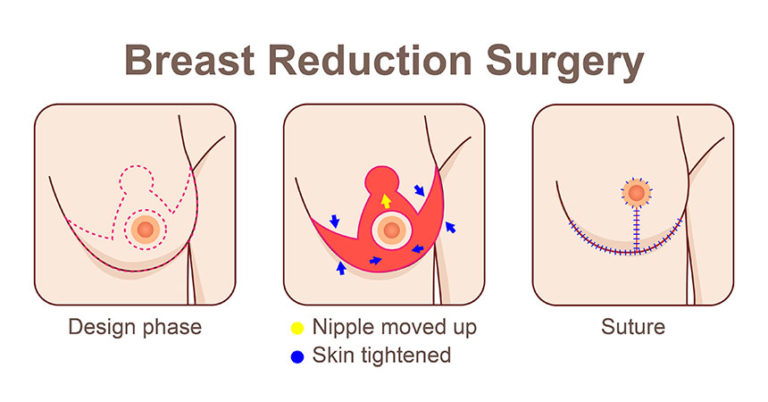Although the media often focuses on stories of women who want to increase their bust size through breast augmentation, many women want to reduce the size of their breasts because of embarrassment, discomfort, and postural problems. The standard breast reduction procedure involves reducing the amount of excess breast tissue and skin and repositioning the nipple and breast tissue to a higher, “perkier” position, essentially providing a breast lift in the process. Throughout the repositioning, the nipple remains attached to the underlying tissues so it can retain its natural blood supply and sensation.


“Dear Dr. Schantz, It is rare to find a physician that possesses such surgical expertise and offers thorough, compassionate, and professional post-op care. My breast reduction surgery was a very life-affirming, life-changing procedure, and I wish I had done it years earlier! I’m sure such a high level of medical care is part of the reason. If I ever have the opportunity to share a recommendation, I will be happy to offer one. Thanks again for all the excellent care!!”
An additional procedure that would enhance the result is liposuction of the axillary area to reduce excess fat deposits.
Incisions are made around the pigmented area (the nipple-areola complex) and extended vertically below the nipple and in the fold under the breast (we often call this incision an anchor incision). The nipple-areola complex is moved upward to the desired location and excess breast tissue, fat, and skin are removed.
The incisions are covered with light dressings and the breasts are placed in a bra which holds the breast symmetrically during initial healing phase. Initial discomfort subsides is controlled with oral medication and incisions fade in 6-12 months.
“Dr. Turner is an amazing Surgeon with wonderful bed side manner. Extremely impressed with each & every one of his staff from start to finish. HIGHLY recommend. ”
All surgery involves risk and potential complications. A thorough discussion of the risks and potential benefits of any procedure is an essential part of the preoperative consultative process. Breast Reduction surgery may increase the risk of not being able to breast feed.